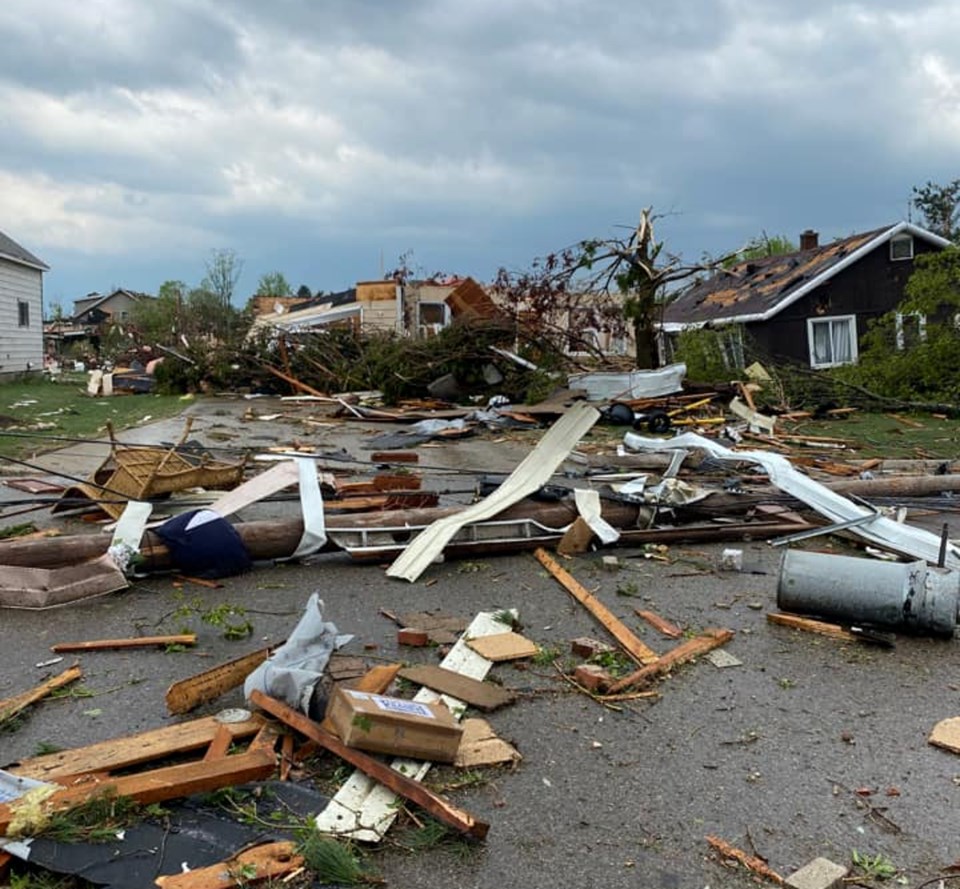Roofs and walls on a busy business stretch were turned to tangled rubble. Mobile homes were destroyed. Tornadoes are so uncommon in northern Michigan that Gaylord doesn't have a siren system to warn people about hazardous weather.
The town of 4,200 turned to cleanup Saturday, a day after a tornado with 140 mph winds pummeled Gaylord, killing two people, injuring more than 40 and shocking residents who are more familiar with snowstorms than spring windstorms.
A utility reported much progress in restoring electricity, though thousands still lacked power. Some roads remained clogged with downed poles and other wreckage.
“We have a lot of debris to clear,” said state police Lt. Derrick Carroll.
Two people in their 70s who lived at the Nottingham Forest mobile home park died, state police said. It was among the first sites hit by the tornado, which was rated an EF3 by the National Weather Service on a scale of 0-5.
“There have been trailers picked up and turned over on top of each other. Just a very large debris field,” said Chris Martin, Otsego County fire chief. Martin said crews used heavy equipment to conduct a secondary search of the area.
He said there’s “probably 95% destruction in there.”
Gaylord, about 230 miles (370 kilometers) northwest of Detroit and two hours south of Sault Ste. Marie, is a popular destination for skiers and snowmobilers in the winter and golfers in the summer. It doesn't have tornado sirens, though anyone with a mobile phone got a “code red” warning from the weather service about 10 minutes before the tornado hit, Carroll said.
Video posted online showed a dark funnel cloud approaching as anxious drivers looked on or slowly drove away on area roads.
“Everyone in Michigan is going to wrap our arms around those families and everyone who is working together to recover here,” Michigan Lt. Gov. Garlin Gilchrist said during a visit.
Betty Wisniewski, 87, avoided injury even though the tornado significantly damaged her house, said son Steve Wisniewski, who lives next door.
“Luckily she was OK — rosary in hand,” he said from a ladder while attaching plastic to his windows. “She was praying. Pretty amazing.”
Gaylord Police Chief Frank Claeys said the immediate moments after the tornado were tough for first responders.
“We were searching in places where we knew the occupants. We were calling them out by name,” Claeys said. “It’s a lot more personal when our officers know the people who live in those homes.”
John Boris of the weather service post in Gaylord said the tornado passed through the community in about three minutes but was on the ground in the region for 26 minutes — a “fairly long” time.
“We don’t get a whole lot of tornadoes,” said Boris, a science and operations officer. “In the state of Michigan, in general, we typically average about 15 or so (a year) and more of those are downstate than they are up to the north. It’s pretty unusual.”
Indeed, the last notable windstorm was in 1998 when 100 mph straight-line winds raked Gaylord.
Boris said warm, 80-degree air earlier Friday and strong winds moving east across Lake Michigan were key conditions producing the tornado.
A link to climate change probably doesn’t fit, he said.
“It’s very difficult to attribute something very specific like this to a large-scale signal like that,” Boris said. “If we had these more frequently, that may be a signal.”
